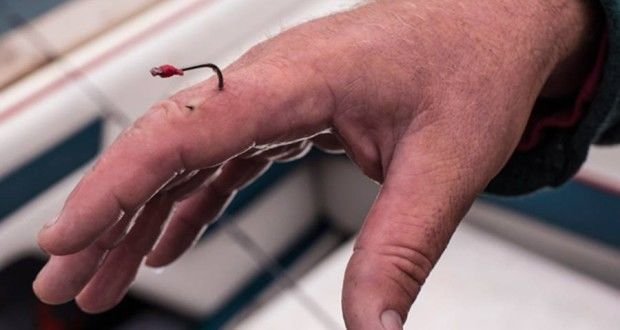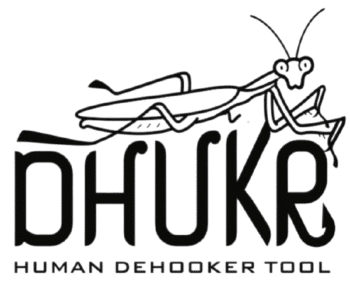
The True Cost of a Fishing Hook Injury: ER Bills, Lost Time, and How to Avoid It
It’s 6 AM on a perfect Saturday morning. You’ve been planning this fishing trip for weeks, the weather is ideal, and you’re finally hitting your favorite spot. Twenty minutes into casting, a poorly timed backcast sends a treble hook deep into your thumb. The barb is buried past the point of easy removal, blood is flowing, and you’re faced with a decision that will define the rest of your weekend: Where exactly do you go from here?
Most anglers find themselves weighing an uncomfortable choice between attempting dangerous DIY removal or heading straight to the nearest medical facility. What many don’t realize until they’re sitting in a waiting room is just how expensive that decision becomes – and we’re not just talking about the medical bills.
Breaking Down Emergency Medical Costs
When a fish hook injury sends you to seek professional medical care, the financial impact can be staggering, with costs varying dramatically depending on where you end up and what your insurance situation looks like.
Emergency room visits for fish hook removal typically range from $500 to $3,000 or more, depending on your insurance coverage and the complexity of the removal. Even with good insurance, copays and deductibles can easily hit $200 to $500 for what amounts to a minor procedure. Without insurance, you’re looking at the full bill, which often includes facility fees, physician fees, and additional charges for any required imaging or tetanus shots.
Urgent care centers offer a more economical option, with total costs typically ranging from $150 to $500. However, urgent care facilities may not be equipped to handle complicated extractions, especially those involving deeply embedded treble hooks or injuries near sensitive anatomical structures. This limitation can force you back into the emergency room anyway, doubling your medical expenses.
The hidden financial costs extend far beyond the immediate medical bill. Consider the time factor: emergency room waits average 2-4 hours nationwide, while urgent care visits still consume 1-3 hours of your day. That’s time you’re not fishing, time you might need to take off work, and time that impacts everyone else in your fishing party.
Lost charter fees represent another significant expense that many don’t consider. A half-day charter can easily cost $400-800, while full-day trips often exceed $1,000. When a hook injury forces an early return or cancellation, those fees are rarely recoverable. Tournament entry fees, travel expenses, and lodging costs all become sunk costs when a medical emergency cuts your trip short.
The Cascade of Consequences Beyond Money
A fish hook injury doesn’t just impact your wallet – it creates a ripple effect that touches every aspect of your fishing experience and often extends well beyond the water.
Your entire fishing party suffers when one person needs emergency medical attention. Planned fishing time gets cut short, group dynamics shift to crisis management mode, and what should have been a relaxing day becomes a stressful ordeal. If you’re the trip organizer or boat captain, the responsibility weighs even heavier as you watch friends’ anticipated fishing time evaporate.
Travel disruptions compound the frustration. If you’re on a destination fishing trip, hours or days of planned fishing can disappear while dealing with medical care in an unfamiliar location. Insurance complications arise when you’re out of network, and finding quality medical care in remote fishing locations can be challenging.
Tournament anglers face particularly steep consequences. Entry fees for major tournaments range from hundreds to thousands of dollars, and a hook injury during competition means immediate disqualification with zero chance of recovering costs. Professional anglers risk sponsorship obligations and prize money, while recreational tournament participants lose their entry investment and bragging rights.
The long-term impacts often prove more costly than the immediate expenses. Infected hook wounds can require multiple medical visits, prescription antibiotics, and extended healing time. Nerve damage from improper removal techniques may cause permanent sensitivity or reduced hand function. For people whose livelihood depends on manual dexterity, these complications can affect work performance for weeks or months.
Recovery downtime forces you off the water during prime fishing seasons. Peak fishing periods don’t wait for your hand to heal, and missing optimal conditions due to an preventable injury adds insult to literal injury.
Smart Prevention Pays for Itself
Traditional first aid kits address cuts and scrapes but fall short when dealing with embedded fish hooks. Band-aids and antiseptic wipes can’t solve the mechanical challenge of safe hook extraction, leaving you dependent on improvised solutions or emergency medical care.
The math on proper preparation is straightforward. A single urgent care visit for hook removal easily costs $150-500, while emergency room treatment can exceed $3,000. The DHUKR Tool costs significantly less than even the lowest urgent care copay, meaning it pays for itself the very first time you avoid a medical facility visit.
Beyond the direct cost savings, having proper hook removal tools eliminates the stress and uncertainty that comes with fishing accidents. You maintain control of the situation, keep your fishing trip on schedule, and avoid the logistical nightmare of finding medical care in remote locations.
Family and fishing partners gain peace of mind knowing that hook injuries won’t automatically trigger emergency medical situations. This confidence allows everyone to fish more aggressively and enjoyably, knowing that accidents can be handled safely and efficiently on-site.
The tool’s one-handed operation design ensures that even if you’re the injured party, you can perform the extraction yourself without depending on others who may lack experience with hook removal techniques. The controlled barb lock mechanism prevents the hook from embedding deeper during extraction attempts, while the tissue shield protects surrounding healthy tissue from damage.
FDA registration provides crucial credibility that improvised tools and traditional techniques simply cannot match. When you’re dealing with a medical situation, using properly validated medical devices reduces liability and ensures you’re following accepted safety standards.
Prevention Costs Less Than Treatment
For less than the cost of a tank of gas, you can save yourself thousands in medical bills and preserve countless hours of fishing time. The DHUKR Tool represents an investment in your fishing future – one that protects both your health and your wallet every time you head to the water.
Professional anglers, charter captains, and serious recreational fishers understand that quality safety equipment isn’t an expense – it’s insurance. When hook injuries occur, and they will occur, having the right tool available transforms a potential crisis into a minor inconvenience that doesn’t derail your entire fishing experience.
Don’t gamble with your trip, your hand, or your bank account. Equip yourself with professional-grade hook removal tools before you need them, because the true cost of being unprepared extends far beyond what any emergency room bill can capture.
